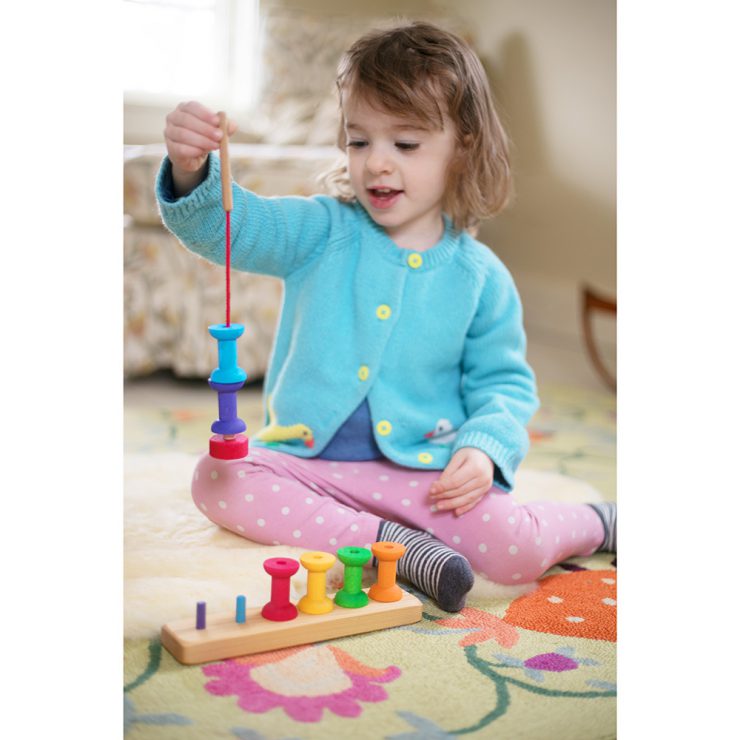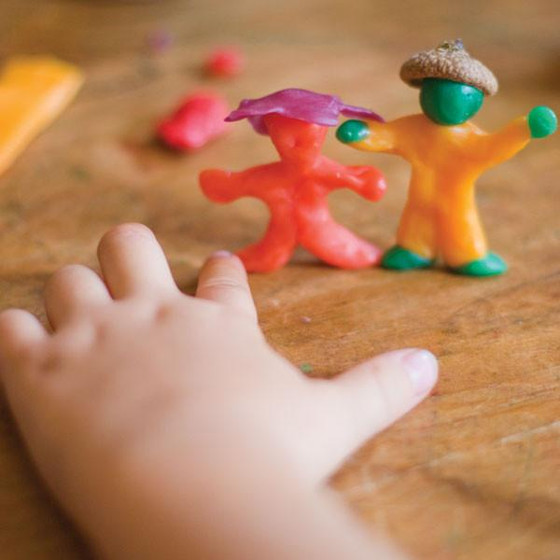Six Fine Motor Crafts for Fun

Often, we associate fine motor skills first with academic tasks, but they are inherent in earlier activities that lead throughout childhood toward greater independence. The toddler climbing stairs in a gross motor triumph is just as delighted as the preschooler mastering all the different ways we fasten clothes—zipping, buttoning, tying. Finer coordination between the hands and the eyes builds to improved self-care and often leads to greater self-esteem. These little people want to “do it themselves”; when they can do buckles, turn doorknobs, or peel apples, they are claiming a greater right to be in charge of their destinies. These life skills blur into the academic area of course. Cutting, coloring, painting, writing, and even typing are just expansions on what the younger child has learned. Just imagine the finesse one needs to turn the page of a picture book!
Children are intrinsically motivated to develop these abilities, but their environment can have a tremendous impact. As parents and caretakers, we can offer them toys and activities that support this work. We can use observation to find the best time to offer challenges and encouragement. When we are aware of how one skill bolsters another, we can watch for opportunities to foster synergies. The following list is just a few ideas. Some are distinctly fine motor activities, but a few are not. Gross motor activities develop strength and perseverance which can be assets when a child is trying to master smaller movements. Try these as distractions during meal prep or as focused one on one time with a parent. When children have more unstructured time to pursue tasks, they can work until they feel they’ve completed them. And like all types of learning through playing, it’s this inner sense of completion that will bring the most satisfaction.
Confetti Cutting: All three of my children spent hours cutting little, tiny bits of yarn, like wool confetti. Sometimes they would do the same with paper. I found that if we prepped a piece of paper with thinned and painted glue, much of their effort could be captured there instead of all falling to the floor. This activity was especially popular when I was making dinner. And all this cutting makes their hands stronger and better able to do other small motor tasks.
Threading: Provide squares of felt with a slit in the center and a piece of ribbon with a large button sewn to one end. Your child can button the ribbon into successive pieces of felt. The wool felt, the textured ribbon and the slick button give all sorts of sensory feedback to help them with this skill.
Beginning sewing: This is an extension of threading, really. Using a piece of burlap, or other loosely woven fabric, your child can sew designs with a darning needle and lace weight or DK yarn. You could help them draw a design to follow or they could just follow their whims. Some children like this task more when the burlap is fixed into an embroidery hoop to keep the burlap a little taut.
Beans, Rice, Lentils, Popcorn: Mixing these in a container and adding tweezers, measuring cups, and spoons can make a very absorbing activity for a child. There can be different bowls for them to sort into, like the birds in Cinderella. Using the tweezers or ice tongs is another strengthening activity. They can also practice pouring these dry ingredients between containers. It is sort of like a sand table, but easier to clean and all compostable.
Making Tracks: Reuse wrapping paper or the packing paper from packages, the bigger the better. Using painter’s tape, fasten it to a table or the floor and let your child draw roads, rivers, or railroad tracks. Then they can follow them with their cars or trains.

Play outside! Climbing trees and monkey bars makes for stronger hands and arms. Carrying buckets of sand or water also develops grip strength. And a child able to follow the wind will know more about all the things that their bodies are capable of doing. That is the sort of confidence we hope they can carry with them into any activity.

